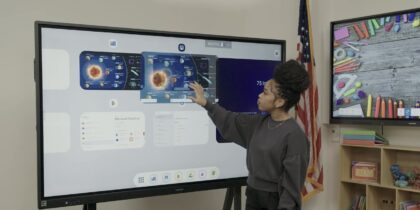Planning and budgeting for the real cost of digital signage requires a long view on what will be needed and what might happen down the road. In some ways, digital signage projects can be likened to icebergs, meaning there’s a lot going on below the surface that no one sees — or, in the case of the cost of digital signage, that few people really think about.
Figuring out what it will cost for hardware and software at the start of a project is easy. But the factors that can affect total cost of ownership, such as creative costs and the unknowns of managing dozens or hundreds of dispersed devices, are harder to predict. Operating a digital signage network can be far more expensive than planning and launching one, particularly if the operators don’t do their homework, or fail to seek expert advice.
All the savings in the cost of digital signage achieved in tough negotiations for hardware and software licensing fees can be quickly lost if the technology deployed to the field requires a service call to address and resolve issues that can’t be fixed remotely, or by coaching non-technical people at the sites. A single “truck roll” — dispatching a knowledgeable service technician to a site — can cost $200-$400, or potentially more, and usually there’s no budget allocated to account for those outages.
Here are some of the hidden costs that can come with digital signage:
Field Operations
People who’ve run large digital signage networks worry a lot about points of failure, and try to minimize them right from the planning stages. They worry about the relentlessly spinning fans and hard disk drives inside computers. They worry about cables that come loose, and connections that can break. They worry about antennas that get dislodged or broken and external equipment that gets bumped, moved or even stolen.
Digital Menu Boards Bring Huge Cost Savings
Download this white paper to explore the business benefits of outdoor digital menu boards. Download Now
When there are outages, conventional digital signage installations using personal computers will often need a mouse and keyboard plugged in to start analyzing what’s gone wrong. It’s not typically something workers at the location can be coached through over the phone. Instead, this generally requires a pricey field technician to get dispatched.
New technologies have started to address those core issues. Many PCs and media players are now fanless and use solid state hard drives. But the biggest development may be commercial displays that have media players built-in. Samsung pioneered Smart Signage technology, which eliminates the need and cost of external players, as well as cables and connectors. The internal media player is solid state and even equipped for Wi-Fi. If a smart display runs into issues, it can be rebooted at the site simply by using a remote control and turning it off and on, causing a reboot —no truck roll needed.
Creative Costs
Many digital signage networks have languished after they’ve been launched due to a lack of plans, processes and budget to keep programming fresh. Signage networks only work if people watch, and people will stop watching if the screen rarely changes.
To properly plan a budget for programming digital signage for the three- to five-year life cycle of the network, operators need to determine:
- the breadth and amount of information that needs to be shown across different screens and channels
- where the content will come from
- how often it needs to be changed to remain fresh and relevant for viewers
Many digital signage software platforms include tools and templates that allow users — even those with limited creative skills — to produce some basic messaging. But in most cases, networks still need a substantial amount of content produced by either internal hires or third-party companies. As a result, creative can, with some networks, prove to be the largest operating cost line item.
Shipping and Installation
Deployment costs are measured in numerous ways, but the big ones are labor and shipping. The price and the amount of time required to prepare and install displays depends on the technology used. The amount of equipment shipped can also impact pricing, particularly if different components come from different suppliers.
One of the arguments in favor of Smart Signage displays is the simplicity of installations, because a built-in media player means no extra boxes to mount or cables to connect. In the same vein, everything required for a digital signage installation is contained within a smart commercial display, meaning it only requires one shipment, often straight to the installation location.
There’s a lot to think about when determing the total cost of your digital signage solution. However, by being able to break down some of these costs and applying a total cost of ownership model, enterprises can budget for some of the potential extra expenses associated with digital signage.
Read the infographic above to see how you can budget for the cost of digital signage.







